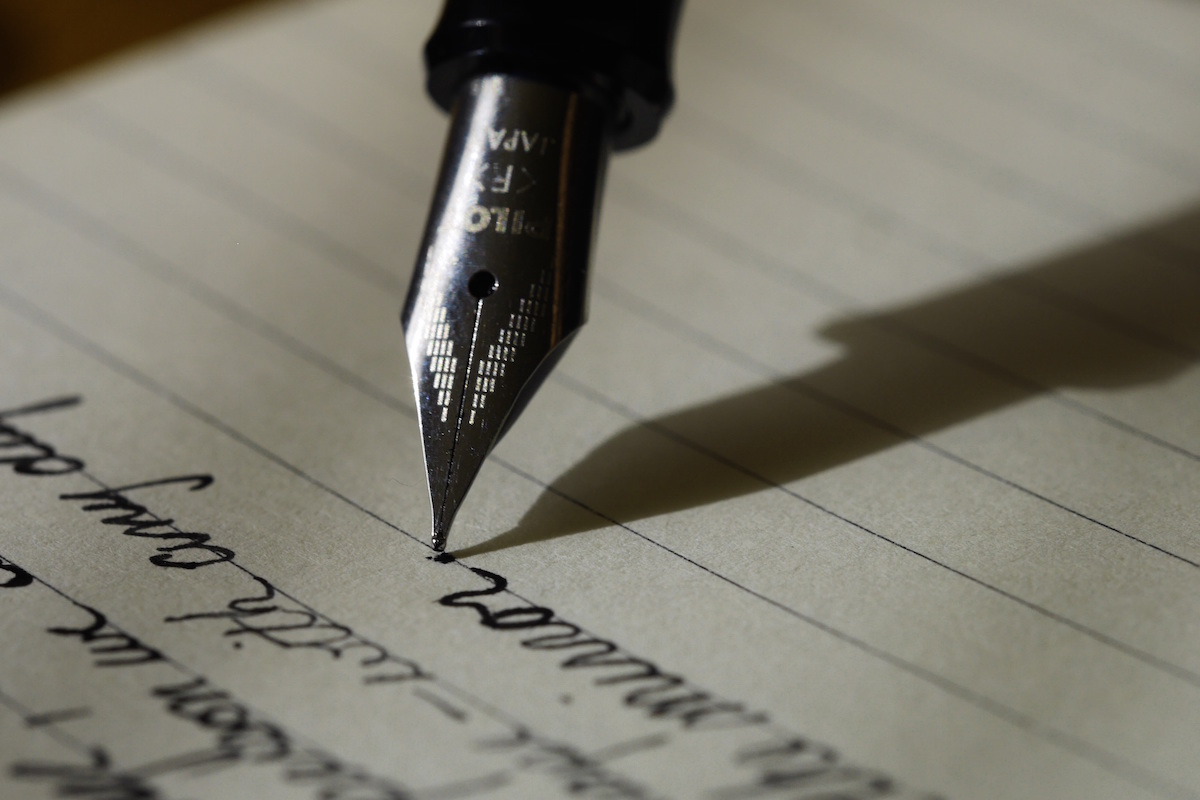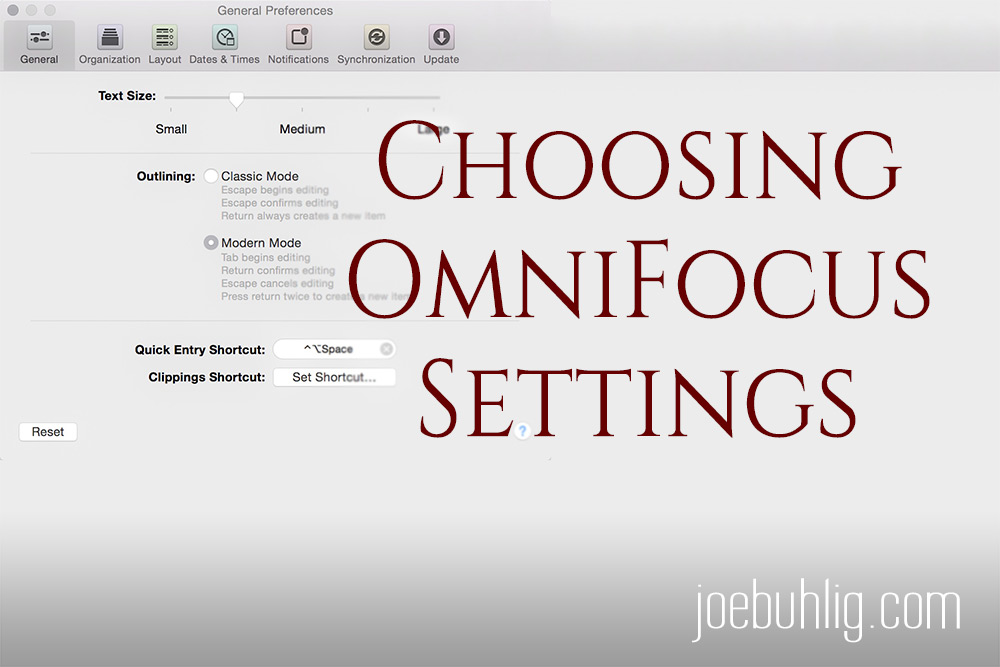
38: Using Multiple Desks In One Office
Since starting to exclusively write with pen and paper, I've added a dedicated writing desk to my office. This week I explore the pros and cons of using multiple desks in my office.

Since starting to exclusively write with pen and paper, I've added a dedicated writing desk to my office. This week I explore the pros and cons of using multiple desks in my office.

When I started with GTD five years ago, I was certain it was the missing piece to my mental overwhelm puzzle. It was the five-step framework that would keep me from procrastinating and give me the motivation to accomplish everything to which I kept saying yes.

I began hand writing articles with a lot of skepticism mixed with hope. I didn't know what to expect but I wanted a positive outcome. As much as I lean toward an integration of technology in every aspect of my work, I felt a sense that paper had benefits I had never understood.

Over the past month I've made some design changes and layout alterations here on the site. Some of that was purely for aesthetics and ease of use, but it also included some back-end alterations to allow guest posting. I've debated this for a long time and I'm finally ready to pull the trigger.

As I learn how to handle the good and bad that comes from being ADHD, I've learned the power of reading books over articles.

There's something liberating about putting a name to something you didn't understand. This was my exact experience when I learned I am ADHD. It gave me words to explain the way I think and those words have given way to a deeper comprehension of how I operate.

The longer I practice GTD principles, the more intentional I try to be with the time I spend updating my systems. I need my commitments to be thought through and my decisions to be made ahead of time. Knowing that I am prone to starting new projects before I have time for them leads me to a need for a recurring time of reevaluation.

It's been a while since I've shared my entire GTD structure. And now that I'm rereading the book, I figured it would be a good idea to share what I'm currently doing before it changes.

There are times when you need a feature in software that doesn't currently exist. Sometimes that leads to exploring alternatives or even creating your own, which is how inventors and entrepreneurs get a lot of their ideas.

After reflecting on the process of writing a daily schedule by hand and discussing the benefits of the analog over the digital, I've decided to try writing articles with pen and paper.

I've been actively exploring why I am big into productivity for the past two months. In part, that led me to seeing a counselor and discovering a missing piece to my mental puzzle, even though it's likely obvious to most.

I used to just pick up a book, start at the beginning, and read it to the end. I tried not to bend any pages and always used a bookmark to make sure the book still looked brand new when I was finished. I had an unwarranted fear of ruining my books because I held them in such high regard.

After almost three months of typing with a Dvorak keyboard, I've reached some conclusions about this QWERTY alternative. Like most comparisons of this nature there are some significant pros and cons between the two. But I don't think it's fair to draw any conclusions until you've experienced both sides.

Markdown has become a major part of how I do all of my writing despite being a web developer. It has a lot of benefits even if you know how to write the HTML itself.

I'm guilty of looking for ways to accomplish tasks on the computer long before it crosses my mind to try paper or the whiteboard. It's almost embarrassing sometimes. The idea of going to a notepad as a first instinct is hard for me to grasp.

I write and talk about my OmniFocus Dashboard a lot. And that's for good reason: it's the central hub of my day-to-day work and the place where my decisions about the day surface.

Mike Schmitz joins me this week to talk through the use of analog tools and how that can help us understand when and where to use the appropriate digital tool.

After working on multiple sides of agriculture and seeing how the back-end of the food industry operates, I've come to the realization that there is some really bad information out there about agriculture and how we decide what to eat.

Ever since I published an article about leaving Evernote I've received numerous recommendations for alternatives. It seems there is an endless supply of catchall buckets that you can drop information into. I appreciate all the ideas, but it isn't the point.

Here's an update on the new TextExpander pricing and a deep dive into why I wrote a script that shuffles my tasks. That's right. There's a big benefit to randomizing a task list.

We all have those projects that we know we should be working on, but without a deadline or someone relying on you it's hard to keep it going. Things come up and the easy tasks to put off are the ones without urgency pushing them on.

I ran across this idea when reading an article by Derek Sivers. The premise is simple: creating a frequently updated page to show what the person is currently doing. The concept really resonated with me, and I expanded on it a bit.

I go on a rant about building websites instead of apps. That leads me to a subsidiary rant about the polarizing changes to TextExpander.

In a previous role I spent some time researching project management software and evaluating it for company use. One of the turn-offs that my end users brought up was an extreme distaste for running a stopwatch on the tasks being tracked. I get it. No one wants to be stuck to a clock, especially when those reviewing the numbers are your managers.

It never fails. I sit at our kitchen table over breakfast and mention to my wife that it's going to snow that day. The first question she asks? "How much?" I don't know! All I know is that my alert says it's supposed to happen!

When you have a large amount of data available, it's easy to be paralyzed in making a decision about how to analyze it. The same is true when you have a lot of tasks and little clarity.

No application setup is complete without tweaking the settings to your liking. This is the power (and struggle) of OmniFocus. Some of the available options make drastic changes while others lead to subtleties you may not notice.

There are times when I want to look back and see what I did on a specific day. This is extremely helpful when I need a record for a client, but no matter the reason, I find myself referring to my task history frequently.

In this episode, I go through the ideas behind agile development and applying them to get a minimum viable product out the door. This is exactly how OmniGroup has now gotten to the point of bringing themes back to OmniFocus. Oh, and I completely missed daylight savings.

I've got a bonus for you this week: my Alfred theme. I've tweaked the look of Alfred quite a bit over the few years I've been using it. I wanted something simple and unobtrusive, but I also wanted it to be compact and cram a lot of data into a small space. If that sounds appealing, give it a try.